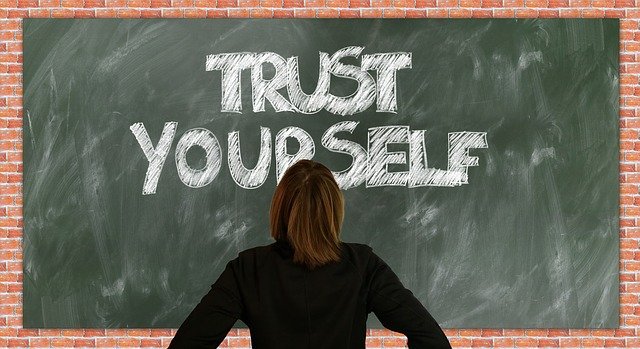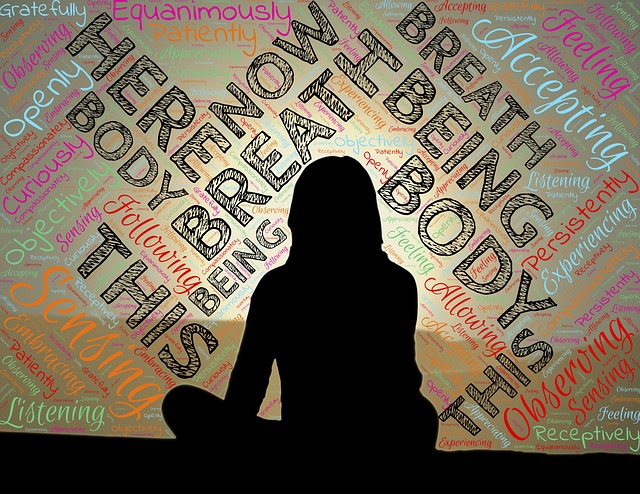David Treleaven, author of Trauma-Sensitive Mindfulness: Practices for Safe and Transformative Healing, organised an online Meet-Up to explore how to provide accessibility for people with disabilities. While many of us experience psychological disabilities or hindrances because of trauma and adverse early childhood experiences, the focus on this Meet-Up session was on facilitating access for people with physical disabilities. The insights and suggestions are relevant to facilitators of any group of people, not only those seeking to engage in trauma-sensitive mindfulness training or facilitation.
Awareness of disabilities
To increase awareness of the nature and range of physical disabilities for facilitators/trainers, David introduced the topic of accessibility by highlighting the “massive and complex” area of people who have a physical disability or impairment. He stressed that as trainers/facilitators we are not aware of the different impairments of participants and the impacts on their ability to access what we are sharing in a group environment. He emphasised the need to undertake an “accessibility check-in” early when facilitating a group to ascertain the particular needs of people in the group.
Given the interactivity and diversity of physical impairments, it is not possible to anticipate all the access needs of everyone – so a check-in is essential. David helped the Meet-Up group increase their awareness of the complexity of disabilities and their impacts by having three people with lived experience of disability (and experience in advocacy for people with disabilities), who told their stories in a moving, disarming way. Among other things, their presentations highlighted the prevalence and unique combinations of impairments that people do experience.
For instance, each of the three presenters identified that they experienced hypermobility – pain in joints (e.g. knees, fingers, hips) that typically extend beyond the normal range. It can manifest in diverse ways including the inability to stand, sit upright or walk for any length of time and can vary over time or on any given day. A specific form of the hypermobility spectrum, known as the Ehlers-Danlos Syndrome, can be particularly debilitating and limit the capacity of an individual to engage in the normal range of mindfulness activities such as mindful walking, adopting an upright sitting position or standing. The Ehlers-Danlos Society provides a wide range of community resources for people suffering from this syndrome and others who wish to learn about its manifestations and impacts.
Different manifestations of disabilities and their impacts
Each of the three presenters reinforced the benefits of mindfulness meditation for people experiencing disability and/or chronic pain. However, they drew on their lived experience of disability and pain to share their stories of experiencing difficulties in effectively participating in meditation groups because of a lack of awareness of facilitators/trainers and willingness to make adaptions to their meditation process to enable full access for people experiencing disability.
Heather Boyes spoke about her chronic pain from hypermobility and her environmental sensitivity and, in particular, her sensitivity to fragrances – an impairment exacerbated by the ubiquitous presence of fragrant hand sanitisers and cleaning products as a result of COVID -19 in the community. Her allergic response can range from swollen lips to a “series of stroke-like headaches” and anaphylaxis. She has found that mask wearing brought on by COVID-19 restrictions does not help her as pointed out that we have “olfactory receptors” in every organ, especially the skin.
Heather’s sensitivities extend to touching things like mould, experiencing a lack of airflow and transitioning from inside to outside (changing to a different environment which includes temperature differences).
Heather also explained that public places could result in allergic-type reactions due to sensitivity to lighting, “blue light” from computers and other digital devices and sunlight. All of her senses are heightened by her condition, so that she is even affected by phone transmission.
Heather’s suggestions to make a meditation space accessible to her and others include:
- Ensure people are aware of fragrance sensitivity and advise participants in advance not to wear strong fragrances to the meditation sessions
- Ensure there is ready access to clean airflow
- Be conscious of potential industry smells from nearby factories/workplaces
- Have all mobile phones on flight mode before switching them off
- Be aware of a person’s emergency contacts and whether they use medication or an EpiPen for emergencies (such as anaphylaxis)
- Don’t assume that products branded safe (such as essential oils) are safe for everyone.
Cheryl Harris spoke about her connective tissue disorder that was diagnosed 19 years previously. Her hypermobility manifests in difficulty in walking and standing and pain in her arms, hands and shoulders leading to migraines. Associated with these disabilities is “visual impairment” and difficulty with computer screens. Cheryl found that she experienced considerable difficulties during chronic pain meditation classes despite the trauma-sensitive approach adopted by the trainer. Her physical impairments meant that the meditation sessions were relatively inaccessible for her.
While everyone in Cheryl’s meditation class had chronic pain, she was the only one with mobility limitations. This meant she could not participate in standing meditations or mindful walking. It left her watching and not participating. She left her initial meditation class after 12 years because of the physical and emotional strain involved and joined another group that she was better able to engage with.
Cheryl’s suggestions for meditation trainers and facilitators include:
- Recognise that you have the responsibility to find out students’ accessibility needs – it is not the students’ role to initiate this discussion
- Establish access needs early on, e.g. “What would help you to feel welcome?” (she stated that the specific words do not matter – it is the awareness and sensitivity that really matter)
- Recognise that students may have experienced stigma because of their disability
- Don’t assume that people in pain have a disability or that all people with a disability are experiencing chronic pain
- Use the language that the person in front of you uses (How do they describe their impairment? – textbook labels do not help because disability is a highly individualised and complex phenomenon)
- Consider how intersectionality plays a role, e.g. in increasing the possibility of social isolation, for instance, for someone who has a disability, is a woman and an Aboriginal.
Cheryl provided an excellent resource titled, Adapting Mindful Practices to People Who Have Special Physical Needs.
Tara Beech explained that she suffers from fibromyalgia and hypermobility. She indicated that chronic pain meditations are particularly difficult for her. When she pays attention to her pain she experiences a burning sensation under her skin – resulting in the only pain-free area of her body being under her lips and her left eye.
Tara has decided that she has to treat pain like trauma and adopt a pain-sensitive approach to meditation (not unlike trauma-sensitive mindfulness). Her approach involves:
- Cutting slack for herself through self-compassion
- Meditating when she feels well
- Lying down as the stress of sitting up triggers an allergic reaction
- Avoid going beyond her “window of tolerance”.
Tara’s suggestions for facilitators include:
- Helping people differentiate between “difficulty” and “distress”
- Allow people a choice of anchors (and, where possible facilitate this choice through a session dedicated to choosing)
- Encourage a change of posture where appropriate
- Be aware that some anchors can cause stress, e.g. the increasing number of people who experience distress/trauma when using breath as an anchor because of personal experience with COVID-19 illness and/or asthma.
- Encourage participants to savour something in their life, e.g. a person, an image, an experience, a skill-set or an achievement – this can provide a very pleasant and positive anchor and enable a person to focus on something other than their pain , loss or distress
- Willingly explore the “space of disability” (Including neuro-divergence, auditory sensitivity and auditory impairment)
- Be willing to explore “work arounds”, be patient, and be flexible (not static).
Understanding shame
Each of the presenters spoke about the shame they had experienced in certain meditation situations. Shame was catalysed by being different, being the only one with a particular impairment, inability to fully participate, and/or divergent behaviour (e.g. having to lie on the floor which was considered “poor form”). They experienced shame because they felt that they were creating a disruption, distraction or dislocation as a result of their unique set of needs arising from their diverse disabilities. In the text chat during the Meet-Up, Dana Baron commented that shame is “stigma turned inwards” and that shame can impede/hinder a person from accessing necessary resources or adaptions/adjustments.
The presenters suggested that “shame will be in the room” and there is a constant need to be gentle. It will also require of the teacher/facilitator a willingness to “have a go”, to accept that you will “not know what to do” in some situations. Some impairments will be invisible (especially in an online environment), so it is important to offer choice and support (despite the inconvenience and the challenge to move outside your “comfort zone”).
Reflection
At the time of listening to the Meet-Up, I was spending most of my days with my feet elevated as I was suffering from an infected ankle – I could relate to the pain associated with walking and standing when you have a disability. It reminded me of the time when a disc in my back collapsed and I spent 18 months in continuous sciatic pain (along with pneumonia in the early stages) – a condition resulting from the trauma of my mother dying and an arduous flight to and from Cartagena in South America (36 hours each way) as well as the cultural shock.
Listening to the presenters, I also became aware that I have some form of environmental sensitivity (which I had not named before) – I experience “exercise asthma” when playing tennis in cold environments and sweating at night when the humidity is very high (over 80%) and the wind speed is low (below 10 kph).
As we grow in mindfulness we can become more aware of what other people are experiencing, more sensitive to their needs and more courageous in taking appropriate, compassionate action.
___________________________________________
Image by Jackson David from Pixabay
By Ron Passfield – Copyright (Creative Commons license, Attribution–Non Commercial–No Derivatives)
Disclosure: If you purchase a product through this site, I may earn a commission which will help to pay for the site, the associated Meetup group, and the resources to support the blog.









